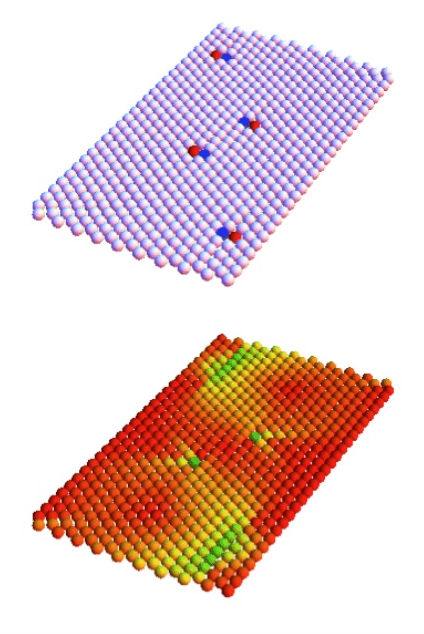
We address two fundamental questions posed by nanomechanics: the influence of sample size and geometry on the yielding properties of crystalline materials below the micrometer scale, and the characteristics of dislocation motion and energy dissipation along the deformation process. Over the last years, the introduction of microcrystal compression testing has led to a deeper investigation of scale-induced phenomena in plastic deformation. Accessing the microscale showed that size effects may have dramatic consequences on yield, making smaller samples harder to deform and more unpredictable. A crucial question is whether such behaviour would extend below the micrometer scale. Here we provide a thorough study of the mechanisms of yield and plastic flow in inherently small systems under compression in a relatively simple geometry, which can be easily reproduced in various experiments on crystalline films. We show that at very small scales the role of boundaries is integral to nanoplasticity, and that the irreversible deformation of materials proceeds in a novel way, deviating from the universal behavior observed at larger scales.
Our analysis provides all the necessary information to characterize the onset of plastic flow at small length scales. Plasticity is no longer dominated by bulk phenomena, and surfaces play a key role. Indeed, the number and arrangement of the first nucleated dislocations must account for the heterogeneous distribution of stress stored inside small crystals. We employ this argument to obtain a theoretical estimate of the yield stress. Beyond the first plastic event, plastic flow occurs in an intermittent manner, reminiscent of irreversible deformation at larger length scales. Plastic avalanches of broadly distributed sizes are observed in both displacement and force control compression tests. Nevertheless, we show that the absence of dislocation storage has important effects on the scaling features of viscoplastic dynamics below the micrometer scale, with the statistics of plastic events ultimately violating the universal behaviour observed at larger scales. These results can carry over towards characterizing the microscopic dynamics of plastic deformation in thin films of self-assembled nanostructures of recent interest in applied physics, colloidal chemistry, and materials science.
References:
Yielding and irreversible deformation below the microscale: Surface effects and non-mean-field plastic avalanches,
P. Moretti, B. Cerruti & M.C. Miguel
PLoS ONE 6 (6), e20418 (2011).
In collaboration with
- Paolo Moretti
- Benedetta Cerruti
